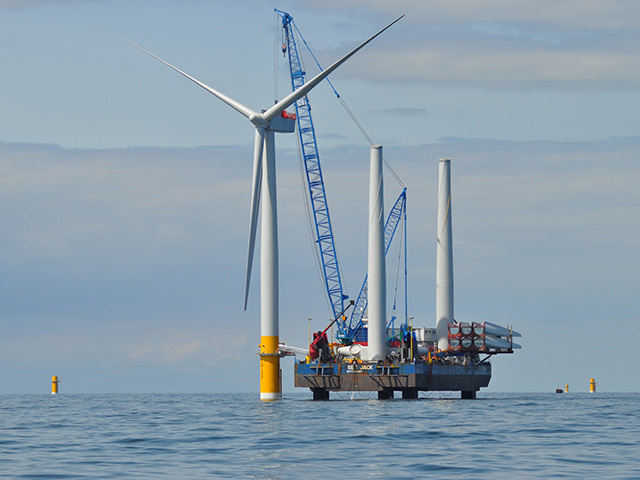
Plans to build one of the world’s largest offshore windfarms off the British coast have been axed by developers.
The £3billion Atlantic Array would have seen up to 240 wind turbines being built in the Bristol Channel, off the Devon coast, producing enough energy to power nearly a million homes.
But now developers RWE, which announced plans to cut £850million in costs and axe 6750 jobs earlier this month, has confirmed it has scrapped plans for the controversial project.
“This is not a decision we have taken lightly,” said RWE director of offshore wind Paul Cowling.
“However given the technological challenges and market conditions, now is not the right time for RWE to continue to progress with this project.
“We will continue to focus on the other less technically challenging offshore projects within our extensive offshore pipeline of up to 5.2GW.
“We are very grateful for the support we have received from the many interested parties involved in helping us to develop the Atlantic Array project.
“However the commercial reality means that in the current market conditions, overcoming the technical challenges within The Bristol Channel Zone would be uneconomic for RWE at this time.”
The plans, originally announced in 2007, would have seen 240 giant turbines being erected nine miles off the coast of Devon, covering a 77 square mile area of the Bristol Channel.
The 220m high turbines would have produced up to 1.2GW of electricity – enough to power around 900,000 homes – and connected to the mainland at Alverdiscott.
Plans were formally submitted for the project earlier this year, with first electicity expected by 2019, but now the entire project has been shelved.
The decision marks a significant blow to offshore energy targets, and comes just days after nine of Europe’s largest renewable energy firms called on the European Union to confirm long-term targets to encourage more investment in the sector.
The Crown Estate, which manages the coastal waters and had leased the site to RWE for the project, admitted it expected other projects to fall by the wayside in the next few years.
“Now that the industry has been developing projects for a number of years, there is a much deeper understanding of the characteristics of successful projects and we will see further attrition in the time to come,” said Huub den Rooijen, the Crown Estate’s head of offshore wind.
“Paradoxically, this is a positive development because it provides greater clarity to key stakeholders such as supply chain and consenting bodies, and brings greater focus to the investment opportunities.”
Green power trade body RenewableUK said the decision was disappointing but unsurprising given the site’s deep-water location.
“We’d be the first to complain that messaging from Government in the recent past has been extremely confusing and inconsistent but in this particular case the blame can’t be laid at that door,” said chief executive Maria McCaffery.
“The challenges are technical… and when the whole energy sector is under such pressure to reduce costs, they really can’t take the chance of deploying in a place where it would be more expensive because ultimately that would have to be translated into fuel bills.”
